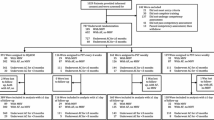Abstract
Background: Intravenous unfractionated heparin remains a cornerstone of anticoagulation therapy for patients with acute coronary syndromes, but regulation to a target aPTT is challenging. We assessed unfractionated heparin infusion regulation by bedside, whole-blood aPTT testing and computerized, algorithmic infusion adjustment, and further evaluated the relationship of achieving the target aPTT with clinical outcomes.
Methods and Results: We studied 1,275 patients randomized to unfractionated heparin in PARAGON-A, which tested lamifiban with or without unfractionated heparin versus unfractionated heparin. All patients had baseline and 6-hour blinded, bedside aPTTs, then aPTTs per algorithm. A central computer translated encrypted values to algorithmic dose-adjustment commands. We assessed the ability to achieve and maintain aPTTs of 50–70 seconds and associations of 6- and 12-hour aPTTs and time-to-target with 30-day outcomes.
Overall, the median 6-hour aPTT was 50–70 seconds and remained so throughout infusion. Individually, only 33.6% of patients achieved 6-hour target-range aPTTs, and only 40% of all aPTTs were in-range. After achieving target, only 42% of subsequent measures were in-range. Thirty-day death or myocardial infarction (death/MI) increased non-significantly as time-to-target increased (p = 0.08). Thirty-day mortality was similar if target aPTT was reached, regardless of timing. Death/MI trended lower if target aPTT was reached by 8 hours (p = 0.10). The best clinical outcomes were associated with in-range aPTTs.
Conclusions: This study represents the most systematic monitoring and regulation of unfractionated heparin anticoagulation to date. Although average anticoagulation achieved target range, wide inter- and intra-patient variability may have important implications for clinical outcomes.
Abbreviated abstract: Using systematic aPTT testing and computer-directed, algorithmic unfractionated heparin infusion adjustment in 1,275 acute coronary syndrome patients, the overall median aPTT was 50–70 seconds. However, only 33.6% of patients achieved this target 6-hour aPTT range. Only 40% of all aPTTs, and after achieving target, only 42% of subsequent measures, were in this range. Thirty-day death or myocardial infarction increased with increasing time to target aPTT (for trend, p = 0.08). The best outcomes were associated with 6- and 12-hour aPTTs in the target range. Wide inter- and intra-patient variability despite highly systematic, controlled unfractionated heparin infusion regulation has important implications for unfractionated heparin use.
Similar content being viewed by others
References
Braunwald E, Antman EM, Beasley JW, et al. ACC/AHA guideline update for the management of patients with unstable angina and non-ST-segment elevation myocardial infarction: a report of the American College of Cardiology/American Heart Association Task Force on Practice Guidelines (Committee on the Management of Patients with Unstable Angina). 2002. Accessed on April 26, 2002 at: http://www.acc.org/clinical/guidelines/ unstable/unstable.pdf.
Ryan TJ, Antman EM, Brooks NH, et al. 1999 update: ACC/AHA guidelines for the management of patients with acute myocardial infarction: a report of the American College of Cardiology/American Heart Association Task Force on Practice Guidelines (Committee on Management of Acute Myocardial Infarction). J Am Coll Cardiol1999;34: 890–911.
Granger CB, Hirsh J, Califf RM, et al. for the GUSTO-I investigators. Activated partial thromboplastin time and outcome after thrombolytic therapy for acute myocardial infarction: results from the GUSTO-I trial. Circulation1996;93: 870–878.
Becker RC, Cannon CP, Tracy RP, et al. Relation between systemic anticoagulation as determined by activated partial thromboplastin time and heparin measurements and in-hospital clinical events in unstable angina and non-Q wave myocardial infarction. Am Heart J1996;131: 421–423.
Wali A, Hochman JS, Berkowitz S, et al. Failure to achieve optimal anticoagulation with commonly used heparin regimens: a review of GUSTO IIb. J Am Coll Cardiol1998;31: 820 (Abstr).
Hochman JS, Wali AU, Gavrila D, et al. A new regimen for heparin use in acute coronary syndromes. Am Heart J1999;138: 313–318.
The PARAGON A investigators. International, randomized, controlled trial of lamifiban (a platelet glycoprotein IIb/IIIa inhibitor), heparin, or both in unstable angina. Circulation1998;97: 2386–2395.
Cohen M, Demers C, Gurfinkel EP, et al. A comparison of low-molecular-weight heparin with unfractionated heparin for unstable coronary artery disease. N Engl J Med1997;337: 447–452.
Antman EM, McCabe CH, Gurfinkel EP, et al. for the TIMI IIB investigators. Enoxaparin prevents death and cardiac ischemic events in unstable angina/non-Q-wave myocardial infarction: results of the thrombolysis in myocardial infarction (TIMI) 11B trial. Circulation1999:1593–1601.
Becker RC, Ball SP, Eisenberg P, et al. for the Antithrombotic Therapy Consortium Investigators. A randomized, multicenter trial of weight-adjusted intravenous heparin dose titration and point-of-care coagulation monitoring in hospitalized patients with active thromboembolic disease. Am Heart J1999;137: 59–71.
Cannon CP, Dingemanse J, Kleinbloesem CH, Jannett T, Curry KM, Valcke CP. Automated heparin-delivery system to control activated partial thromboplastin time: evaluation in normal volunteers. Circulation1999;99: 751–756.
Kohn LT, Corrigan JM, Donaldson MS. To Err is Human: Building a Safer Health System. Washington: National Academy Press, 1999.
Brown G, Dodek P. An evaluation of empiric vs. nomogram-based dosing of heparin in an intensive care unit. Crit Care Med1997;25: 1534–1538.
Rivey MP, Peterson JP. Pharmacy-managed, weight-based heparin protocol. Am J Hosp Pharm1993;50: 279–284.
Cruickshank MK, Levine MN, Hirsh J, Roberts R, Siguenza M. A standard heparin nomogram for the management of heparin therapy. Arch Intern Med1991;151: 333–337.
Zabel KM, Granger CB, Becker RC, et al. for the GUSTO-I Investigators. Use of bedside activated partial thromboplastin time monitor to adjust heparin dosing after thrombolysis for acute myocardial infarction: results of GUSTO-I. Am Heart J1998;136: 868–887.
Author information
Authors and Affiliations
Rights and permissions
About this article
Cite this article
Newby, L.K., Harrington, R.A., Bhapkar, M.V. et al. An Automated Strategy for Bedside aPTT Determination and Unfractionated Heparin Infusion Adjustment in Acute Coronary Syndromes: Insights from PARAGON A. J Thromb Thrombolysis 14, 33–42 (2002). https://doi.org/10.1023/A:1022062204490
Issue Date:
DOI: https://doi.org/10.1023/A:1022062204490




